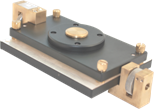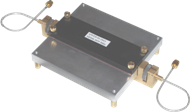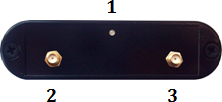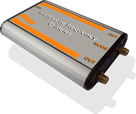
Microwave Frequency Q-Meter
An inexpensive computer controlled microwave oscillator system that enables quick and automatic measurements with a dedicated SPDR and SiPDR.
Precise dielectric measurement set-up for every microwave/material laboratory allows replacing expensive measurement equipment with low cost very acurate measurement.
Microwave Frequency Q-Meter for quick and automatic measurements with a dedicated SPDR and SiPDR resonators. Dedicated, user friendly and highly configurable application allows controlling measurement process and enables easy management of the measurements results.
SPDRs are intended for the measurements of the complex permittivity of laminar dielectric materials including LTCC substrates, but also thin ferroelectric films deposited on low loss dielectric substrates. Additionally, SPDRs can be used for the measurements of the surface resistance and conductivity of various conducting materials such as commercial resistive layers, thin conductive polymer films or high resistivity semiconductors. Such measurements are only possible for large surface resistance samples with Rs > 5 kΩ/square.
SiPDRs are intended for the measurements of the surface impedance of metamaterials and resistive films as well as for the contact-less measurements of the conductivity of semiconductor wafers. Range of thin film materials that can be measured includes resistive layers, thin metal films and conductive polymer films with the surface resistance Rs < 20 kΩ/square.
Classically, the most precise measurements with resonators have been performed employing Automatic Network Analysers.
QWED developed an inexpensive computer controlled microwave oscillator system that enables quick and automatic measurements with a dedicated SPDR and SiPDR.
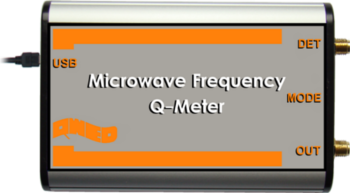
The hardware part of the Q-Meter consists of the PLL-stabilized microwave source with DDS generated reference controlled by fast 32-bit ARM microcontroller. A wideband logarithmic power detector is used to measure the transmitted power level through the resonator. A multipoint resonance curve fitting algorithm will enable the Q-factor to be accurately calculated. The only external information required is the thickness of the sample under test. Great hardware simplicity as well as the use of computer screen for presentation of the results leads to significant cost reduction to start exploration of electromagnetic properties of materials with SPDRs and SiPDRs.
Microwave Frequency Q-Meter can be connected to the computer via USB port. Dedicated application allows controlling measurement process and enables easy management of the measurements results. With dedicated SPDRs and SiPDRs the following electromagnetic properties of materials can be measured:
Microwave Frequency Q-Meter can be connected to the computer via USB port. Dedicated application allows controlling measurement process and enables easy management of the measurements results. With dedicated SPDRs and SiPDRs the following electromagnetic properties of materials can be measured:
•
permittivity (SPDR only)
•
dielectric loss tangent (SPDR only)
•
resistivity
•
sheet resistance for thin films
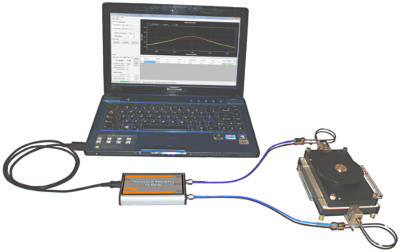
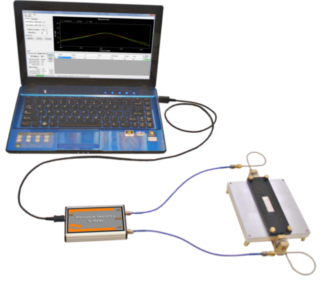
Microwave Frequency Q-Meter connected to the SPDR and to the computer.
Microwave Frequency Q-Meter connected to the SiPDR and to the computer.
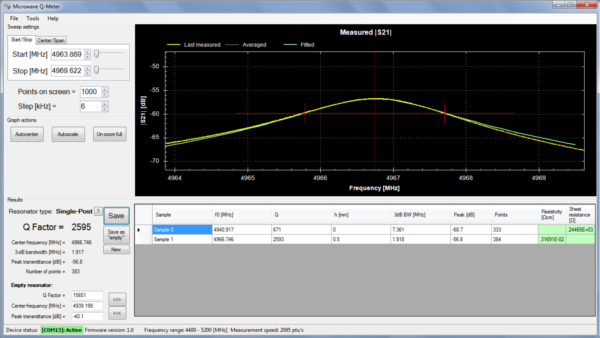
Read more about permittivity, dielectric loss tangent and resistivity measurement using Microwave Frequency Q-Meter with Split Post Dielectric Resonator (SPDR).
Read more about resistivity measurement using Microwave Frequency Q-Meter with Single Post Dielectric Resonator (SiPDR).
Read more about Resistivity and Surface resistance Measurements of Semiconductors and Conductors (pdf file, 2 MB).

